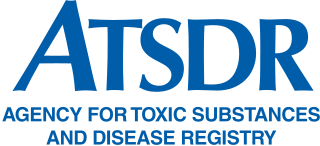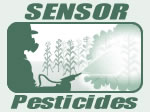Toxicovigilance is the process of identifying and evaluating the risks of poisoning that exist within a community, and proposing and evaluating measures taken to reduce, eliminate or manage them. More specifically, the goal of toxicovigilance is to identify specific circumstances or agents giving rise to poisoning, or certain populations suffering a higher incidence of poisoning. This way, emerging toxicological issues can be revealed, such as the reformulation of a chemical product or a change to its packaging or labelling, the spread of a new illegal drug, or a hazardous environmental contamination. Once an issue has been identified, appropriate health and other authorities can be alerted, so they can take the necessary preventive, repressive or regulatory measures. [1]
The practice of toxicovigilance often involves the registration of cases of poisoning by health professionals, or the analysis of enquiries made to poison control centers. Because of this, practising toxicovigilance is often one of the core tasks of a poison control center.
There is an overlap between toxicovigilance and for example pharmacovigilance or environmental health. They are all are aspects of the broader concept of public health surveillance.
Toxicovigilance was defined in this country by decree in 2003, the purpose of which is to monitor the toxic effects on humans of a product, substance or pollution in order to carry out warning, prevention, training and information activities. (Art. R. 1341-11). Three legislative codes are concerned (public health code, labor code and environment code). [2]

Toxicology is a scientific discipline, overlapping with biology, chemistry, pharmacology, and medicine, that involves the study of the adverse effects of chemical substances on living organisms and the practice of diagnosing and treating exposures to toxins and toxicants. The relationship between dose and its effects on the exposed organism is of high significance in toxicology. Factors that influence chemical toxicity include the dosage, duration of exposure, route of exposure, species, age, sex, and environment. Toxicologists are experts on poisons and poisoning. There is a movement for evidence-based toxicology as part of the larger movement towards evidence-based practices. Toxicology is currently contributing to the field of cancer research, since some toxins can be used as drugs for killing tumor cells. One prime example of this is ribosome-inactivating proteins, tested in the treatment of leukemia.

Pesticides are substances that are meant to control pests. This includes herbicide, insecticide, nematicide, molluscicide, piscicide, avicide, rodenticide, bactericide, insect repellent, animal repellent, microbicide, fungicide, and lampricide. The most common of these are herbicides which account for approximately 80% of all pesticide use. Most pesticides are intended to serve as plant protection products, which in general, protect plants from weeds, fungi, or insects. As an example, the fungus Alternaria solani is used to combat the aquatic weed Salvinia.
Vinyl chloride is an organochloride with the formula H2C=CHCl. It is also called vinyl chloride monomer (VCM) or chloroethene. This colorless compound is an important industrial chemical chiefly used to produce the polymer polyvinyl chloride (PVC). About 13 billion kilograms are produced annually. VCM is among the top twenty largest petrochemicals (petroleum-derived chemicals) in world production. The United States currently remains the largest VCM manufacturing region because of its low-production-cost position in chlorine and ethylene raw materials. China is also a large manufacturer and one of the largest consumers of VCM. Vinyl chloride is a gas with a sweet odor. It is highly toxic, flammable, and carcinogenic. It can be formed in the environment when soil organisms break down chlorinated solvents. Vinyl chloride that is released by industries or formed by the breakdown of other chlorinated chemicals can enter the air and drinking water supplies. Vinyl chloride is a common contaminant found near landfills. In the past VCM was used as a refrigerant.

Environmental health is the branch of public health concerned with all aspects of the natural and built environment affecting human health. In order to effectively control factors that may affect health, the requirements that must be met in order to create a healthy environment must be determined. Environmental health focuses on the natural and built environments for the benefit of human health. The major sub-disciplines of environmental health are environmental science, toxicology, environmental epidemiology, and environmental and occupational medicine.

The Agency for Toxic Substances and Disease Registry (ATSDR) is a federal public health agency within the United States Department of Health and Human Services. The agency focuses on minimizing human health risks associated with exposure to hazardous substances. It works closely with other federal, state, and local agencies; tribal governments; local communities; and healthcare providers. Its mission is to "Serve the public through responsive public health actions to promote healthy and safe environments and prevent harmful exposures." ATSDR was created as an advisory, nonregulatory agency by the Superfund legislation and was formally organized in 1985.

A pesticide poisoning occurs when pesticides, chemicals intended to control a pest, affect non-target organisms such as humans, wildlife, plant, or bees. There are three types of pesticide poisoning. The first of the three is a single and short-term very high level of exposure which can be experienced by individuals who commit suicide, as well as pesticide formulators. Type two poisoning is long-term high-level exposure, which can occur in pesticide formulators and manufacturers. The third type of poisoning is a long-term low-level exposure, which individuals are exposed to from sources such as pesticide residues in food as well as contact with pesticide residues in the air, water, soil, sediment, food materials, plants and animals.

Chelation therapy is a medical procedure that involves the administration of chelating agents to remove heavy metals from the body. Chelation therapy has a long history of use in clinical toxicology and remains in use for some very specific medical treatments, although it is administered under very careful medical supervision due to various inherent risks, including the mobilization of mercury and other metals through the brain and other parts of the body by the use of weak chelating agents that unbind with metals before elimination, exacerbating existing damage. To avoid mobilization, some practitioners of chelation use strong chelators, such as selenium, taken at low doses over a long period of time.

Chlorfenvinphos is the common name of an organophosphorus compound that was widely used as an insecticide and an acaricide. The molecule itself can be described as an enol ester derived from dichloroacetophenone and diethylphosphonic acid. Chlorfenvinphos has been included in many products since its first use in 1963. However, because of its toxic effect as a cholinesterase inhibitor it has been banned in several countries, including the United States and the European Union. Its use in the United States was cancelled in 1991.

Occupational hygiene is the anticipation, recognition, evaluation, control, and confirmation of protection from hazards at work that may result in injury, illness, or affect the well being of workers. These hazards or stressors are typically divided into the categories biological, chemical, physical, ergonomic and psychosocial. The risk of a health effect from a given stressor is a function of the hazard multiplied by the exposure to the individual or group. For chemicals, the hazard can be understood by the dose response profile most often based on toxicological studies or models. Occupational hygienists work closely with toxicologists for understanding chemical hazards, physicists for physical hazards, and physicians and microbiologists for biological hazards. Environmental and occupational hygienists are considered experts in exposure science and exposure risk management. Depending on an individual's type of job, a hygienist will apply their exposure science expertise for the protection of workers, consumers and/or communities.
A poison control center is a medical service that is able to provide immediate, free, and expert treatment advice and assistance over the telephone in case of exposure to poisonous or hazardous substances. Poison control centers answer questions about potential poisons in addition to providing treatment management advice about household products, medicines, pesticides, plants, bites and stings, food poisoning, and fumes. In the US, more than 72% of poison exposure cases are managed by phone, greatly reducing the need for costly emergency department and doctor visits.
Skin absorption is a route by which substances can enter the body through the skin. Along with inhalation, ingestion and injection, dermal absorption is a route of exposure for toxic substances and route of administration for medication. Absorption of substances through the skin depends on a number of factors, the most important of which are concentration, duration of contact, solubility of medication, and physical condition of the skin and part of the body exposed.
Workplace health surveillance or occupational health surveillance (U.S.) is the ongoing systematic collection, analysis, and dissemination of exposure and health data on groups of workers. The Joint ILO/WHO Committee on Occupational Health at its 12th Session in 1995 defined an occupational health surveillance system as "a system which includes a functional capacity for data collection, analysis and dissemination linked to occupational health programmes".
Because of the ongoing controversy on the implications of nanotechnology, there is significant debate concerning whether nanotechnology or nanotechnology-based products merit special government regulation. This mainly relates to when to assess new substances prior to their release into the market, community and environment.

The American Association of Poison Control Centers (AAPCC) is a national nonprofit organization founded in 1958 that represents the nation's 55 poison centers. The AAPCC supports poison centers in their public health mission to prevent poisonings, provide education, conduct scientific research and treat individuals exposed to poisoning from medications, environmental events, plants, animals, and household products or toxins. The AAPCC also supports the efforts of poison centers and interested individuals to reduce morbidity and mortality from unintentional poisonings. The AAPCC sets standards for poison center operations and certifies specialists in poison information who are available 24/7 to respond to public, health-care provider and emergency medical service personnel requests for assistance. In addition, the AAPCC maintains the National Poison Data System (NPDS), the only near real-time poison information and surveillance database in the United States.
Medical toxicology is a subspecialty of medicine focusing on toxicology and providing the diagnosis, management, and prevention of poisoning and other adverse effects due to medications, occupational and environmental toxicants, and biological agents. Medical toxicologists are involved in the assessment and treatment of a wide variety of problems, including acute or chronic poisoning, adverse drug reactions (ADRs), drug overdoses, envenomations, substance abuse, industrial accidents, and other chemical exposures.

Sentinel Event Notification System for Occupational Risks (SENSOR)-Pesticides is a U.S. state-based surveillance program that monitors pesticide-related illness and injury. It is administered by the National Institute for Occupational Safety and Health (NIOSH), twelve state health agencies participate. NIOSH provides technical support to all participating states. It also provides funding to some states, in conjunction with the US Environmental Protection Agency.
In analytical chemistry, biomonitoring is the measurement of the body burden of toxic chemical compounds, elements, or their metabolites, in biological substances. Often, these measurements are done in blood and urine. Biomonitoring is performed in both environmental health, and in occupational safety and health as a means of exposure assessment and workplace health surveillance.

Frédéric Yves Bois, Pharm.D.Ph.D. is a French biological scientist working in toxicology and bioinformatics. He is currently Research Director at the French Institut National de l'Environnement et des Risques (INERIS).
Occupational toxicology is the application of toxicology to chemical hazards in the workplace. It focuses on substances and conditions that occur in workplaces, where inhalation exposure and dermal exposure are most important, there is often exposure to mixtures of chemicals whose interactions are complex, health effects are influenced or confounded by other environmental and individual factors, and there is a focus on identifying early adverse affects that are more subtle than those presented in clinical medicine.
A Regional Health Agency is an administrative public body of the French State responsible for implementing health policy in its region. Created on 1 April 2010, the regional health agencies are governed by Title III of Book IV of the first part of the Public Health Code.